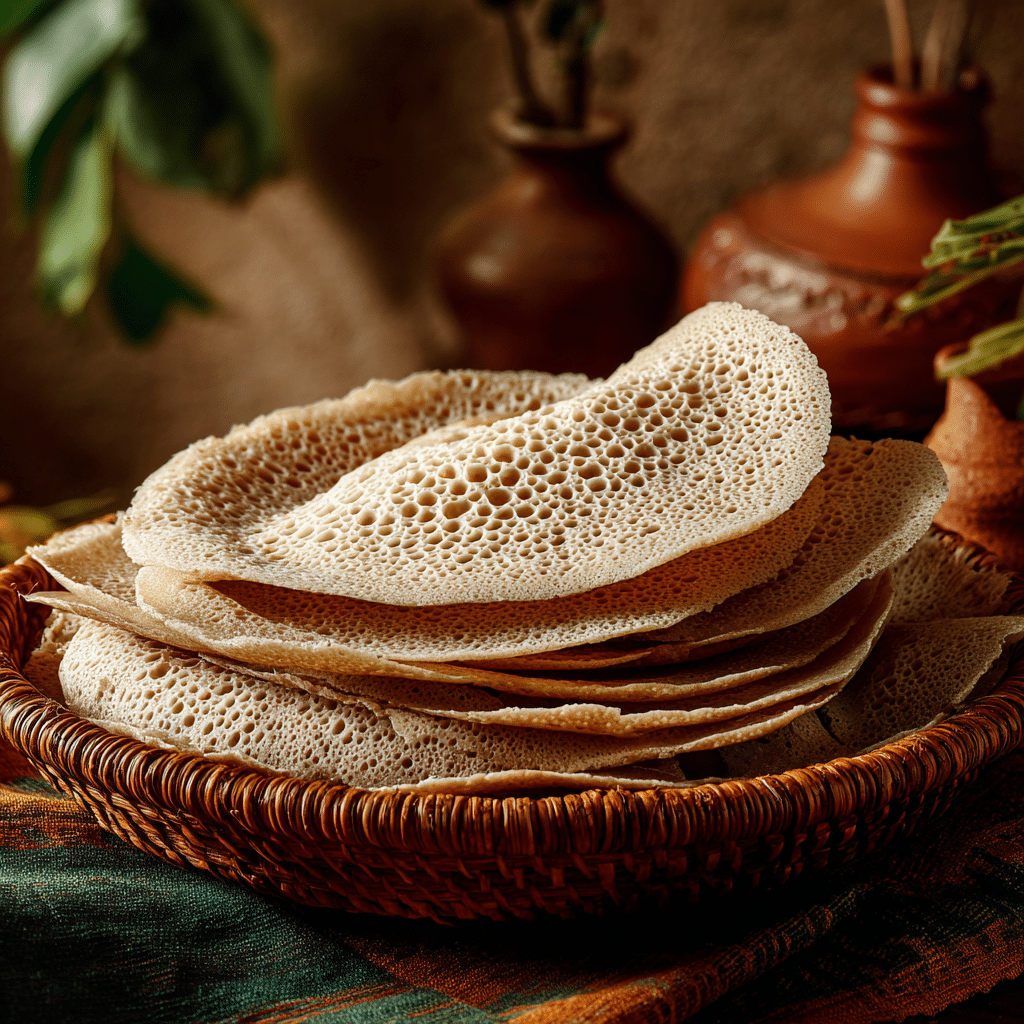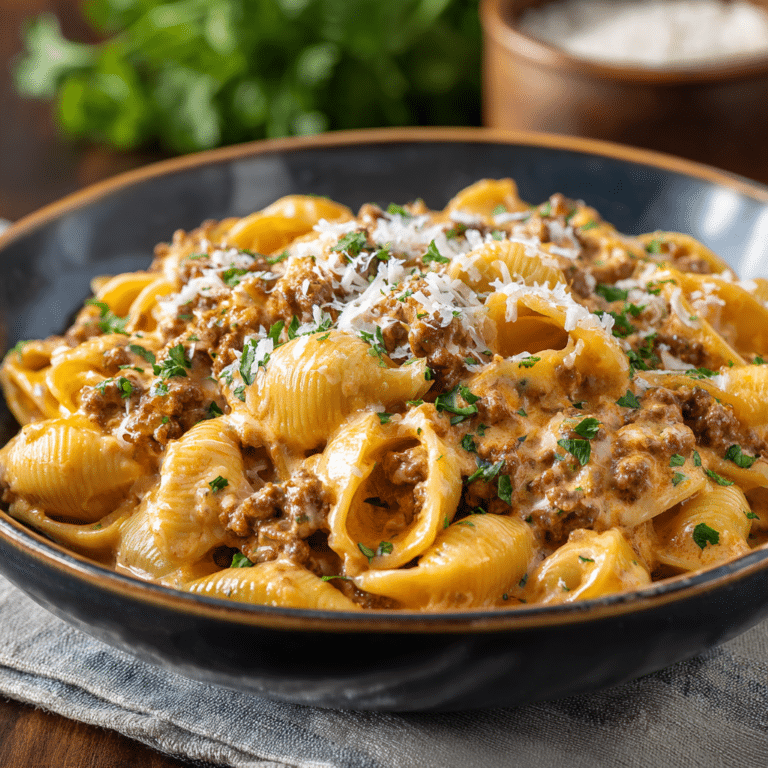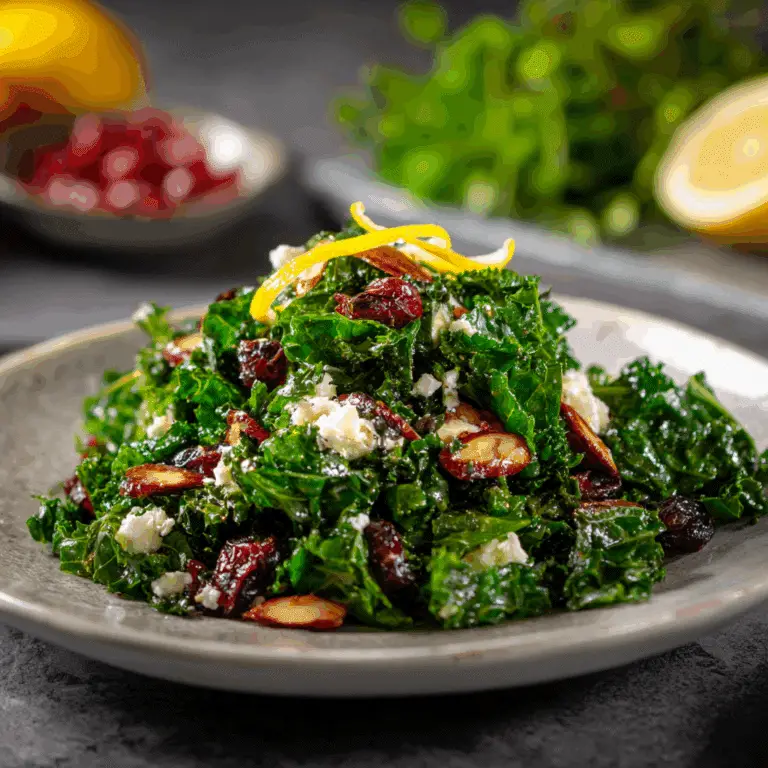Injera (Ethiopia) Recipe
If you’ve ever been enchanted by Ethiopian cuisine, then you know that Injera (Ethiopia) is truly the star of the show. This traditional flatbread, crafted from nutrient-rich teff flour, has an irresistible spongy texture and a slightly tangy flavor that pairs perfectly with hearty stews and vegetables. Each soft, warm piece acts as both a plate and an edible utensil, inviting you to dive into a communal experience that’s as delicious as it is cultural. Making injera at home might seem like a charming challenge, but with just a few simple ingredients and some patience during fermentation, you’ll create something utterly unique and soulful.

Ingredients You’ll Need
Creating authentic Injera (Ethiopia) requires surprisingly few ingredients, yet each plays a critical role in achieving that perfect balance of texture and flavor. The beauty lies in the simplicity which highlights the natural tang of fermented teff and the delicate crispness that emerges from careful cooking.
- Teff flour: This tiny grain flour is key to authentic injera’s slightly sour taste and spongy texture, and it’s gluten-free to boot.
- Water: The right amount keeps the batter flowing smoothly while aiding the fermentation process that gives injera its signature tang.
- Pinch of salt: Enhances flavor without overpowering the delicate natural sourness developed during fermentation.
How to Make Injera (Ethiopia)
Step 1: Preparing the Batter
Start by mixing 1 cup of teff flour with 1 ½ cups of water in a large bowl until smooth. Add just a pinch of salt and stir well. The key to great injera begins here — you want the batter to be thin but consistent enough to coat the pan evenly. Cover the bowl loosely and leave it at room temperature for about 24 hours. This waiting period allows natural wild yeasts to ferment the batter, creating those signature bubbles and the gentle sour flavor.
Step 2: Checking the Fermentation
After the fermentation time, you’ll notice the batter has developed tiny bubbles and a pleasantly tangy aroma. This is your sign that the batter is ready to be cooked. If it’s not sour enough for your taste, you can let it ferment a few hours longer, but half a day to a full day is traditional for that authentic profile.
Step 3: Cooking the Injera
Heat a non-stick skillet or a large flat pan over medium-high heat. Once hot, pour a thin layer of batter, swirling it to cover the surface in a circular motion, similar to making a crepe. Cook uncovered until you see bubbles on the surface and the edges curl slightly—this usually takes about 1 to 2 minutes. The top should look dry and perforated, and you’ll notice a slight lift from the pan. Do not flip injera; it cooks on one side only, which helps maintain its unique texture. Transfer the injera to a clean cloth or plate and cover to keep warm and moist while you repeat the process for the remaining batter.
How to Serve Injera (Ethiopia)

Garnishes
While injera itself is a delight, the way you present it amplifies the experience. Scatter some fresh herbs like cilantro or parsley on top for a hint of vibrancy. A drizzle of spiced clarified butter or niter kibbeh adds a luxurious aromatic touch that complements the bread’s subtle tang. A squeeze of fresh lemon can also brighten every bite.
Side Dishes
Injera (Ethiopia) is typically served as the base for an array of stews and vegetables, known locally as wats and tibs. Think rich lentil stew (misir wat), spicy chicken (doro wat), or sautéed greens (gomen). The bread’s spongy texture is perfect for soaking up sauce, turning each mouthful into a flavor-packed journey. Serve alongside small bowls of these dishes for a traditional communal dining experience that’s fun and interactive.
Creative Ways to Present
Try arranging several layers of freshly made injera on a large platter, creating a ‘basket’ shape that can hold all your stews in the center. Alternatively, roll the injera after cooling slightly for handheld bites at picnics or casual gatherings. If you want to impress, serve injera as a base for modern fusion toppings like spiced roasted vegetables or avocado salsa — the contrast of Ethiopian tradition and contemporary flavors is simply delightful.
Make Ahead and Storage
Storing Leftovers
If you find yourself with extra injera, wrap the pieces tightly in plastic wrap or place them in an airtight container. Leftover injera keeps well in the refrigerator for up to 2 days without drying out, especially if you place a damp paper towel inside the container to maintain moisture.
Freezing
You can freeze injera by layering parchment or wax paper between each piece to prevent sticking. Store the stack in a freezer-safe bag or container, where it will keep for up to a month. When you’re ready, thaw wrapped in the refrigerator overnight to preserve texture and flavor.
Reheating
Reheat injera gently by warming it in a skillet over low heat or wrapping it in foil and placing it in a moderate oven for a few minutes. Avoid microwaving, as it can make the bread rubbery. The goal is to restore that soft, pliable quality so every bite is just as fantastic as fresh off the griddle.
FAQs
What is teff flour, and can I substitute it?
Teff flour is made from teff, a tiny grain native to Ethiopia, known for its nutty flavor and nutritional profile. While you can experiment with whole wheat or barley flour, the authentic tangy taste and spongy texture of Injera (Ethiopia) rely heavily on teff’s unique properties.
How long should injera batter ferment?
The batter typically ferments for about 24 hours at room temperature. This allows the natural yeasts to develop the signature sour taste and bubbles, but depending on your kitchen’s temperature, you might adjust slightly for optimal tanginess.
Why do I not flip injera when cooking?
Injera is cooked on one side only to preserve the soft, porous surface that soaks up sauces. Flipping would change the texture, making it less spongy and more like a traditional flatbread.
Can I make injera without fermenting the batter?
Skipping fermentation will result in a bland, flat flatbread without the classic tang and bubbles. The fermentation is what makes Injera (Ethiopia) special both in flavor and texture, so it’s highly recommended to wait patiently.
What dishes pair best with injera?
Injera pairs beautifully with Ethiopian stews (wats) such as spicy doro wat, lentil misir wat, and sautéed vegetables. Its mild sourness and airy texture balance spicy, rich flavors perfectly, making it ideal for communal-style meals.
Final Thoughts
Making your own Injera (Ethiopia) is a rewarding adventure into a truly special slice of Ethiopian culinary heritage. With just a few simple ingredients and a little time, you’ll create a bread that’s more than food — it’s the centerpiece of a warm, shared meal. I encourage you to try this recipe and enjoy the magic of injera fresh from your own kitchen; it’s an experience you won’t forget and one your friends will keep asking for over and over.







